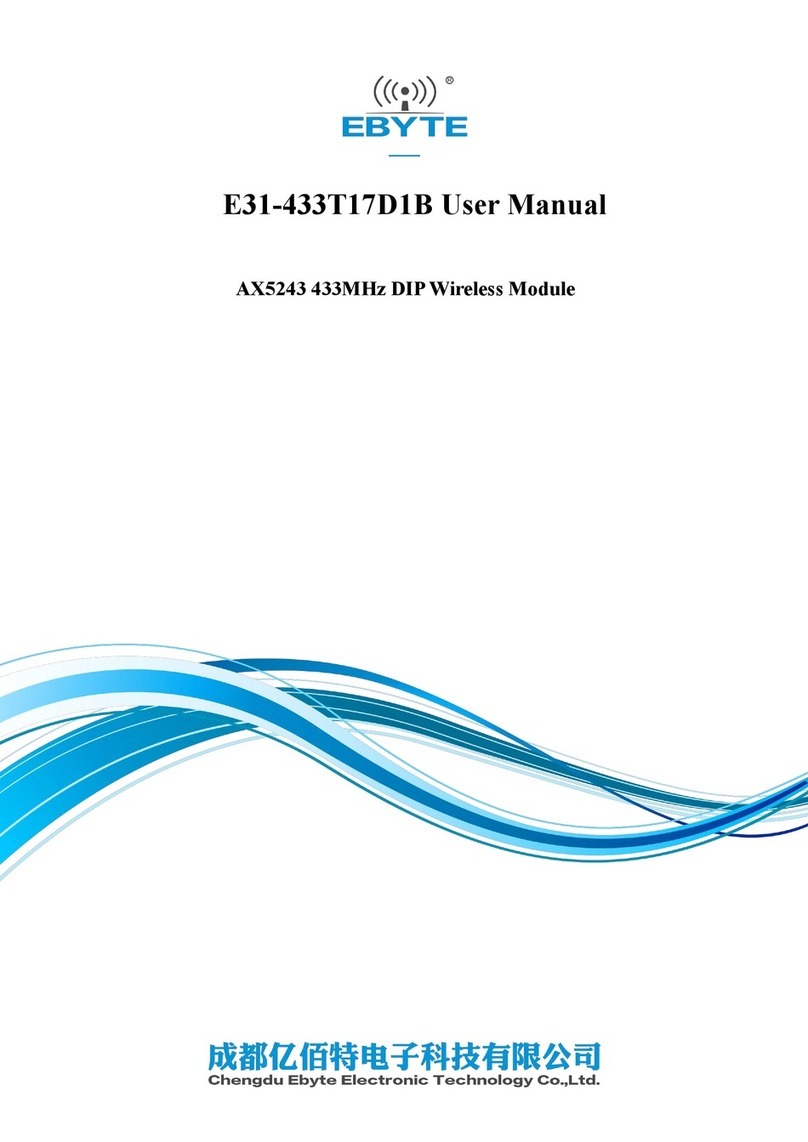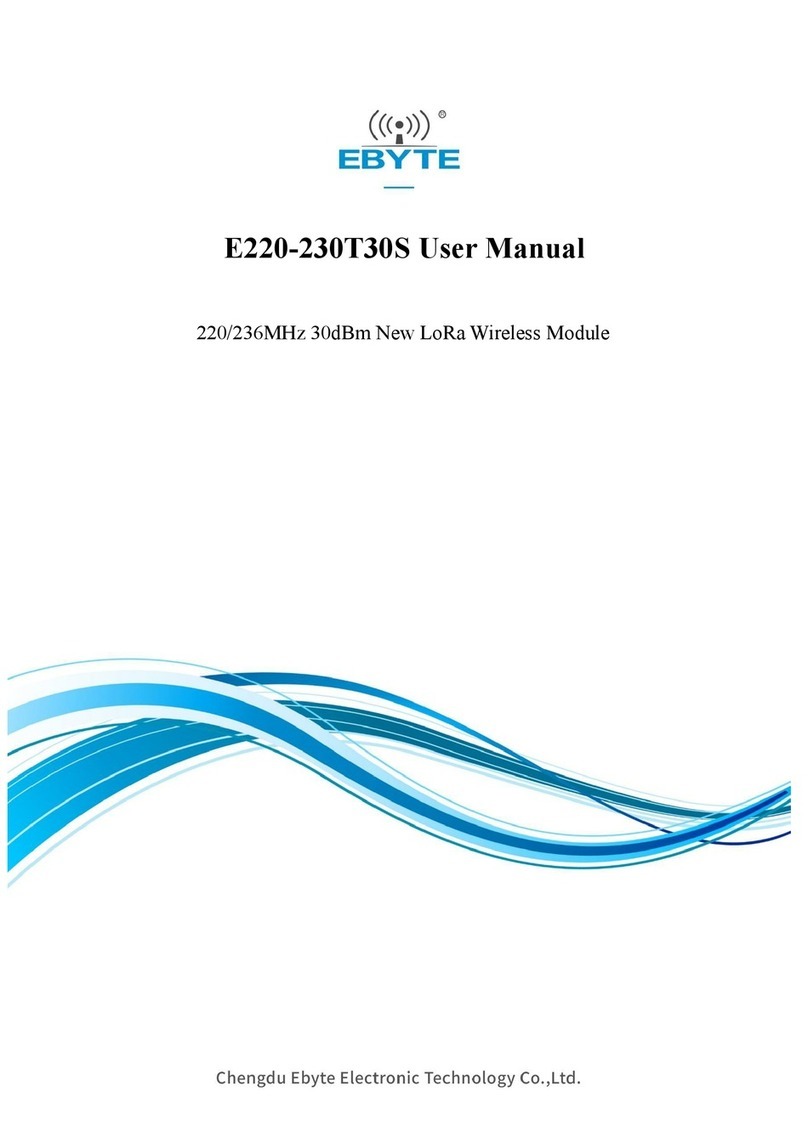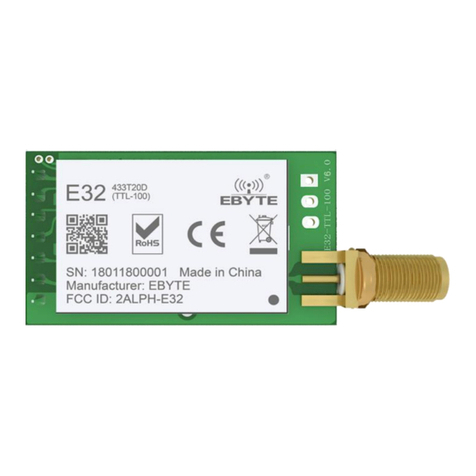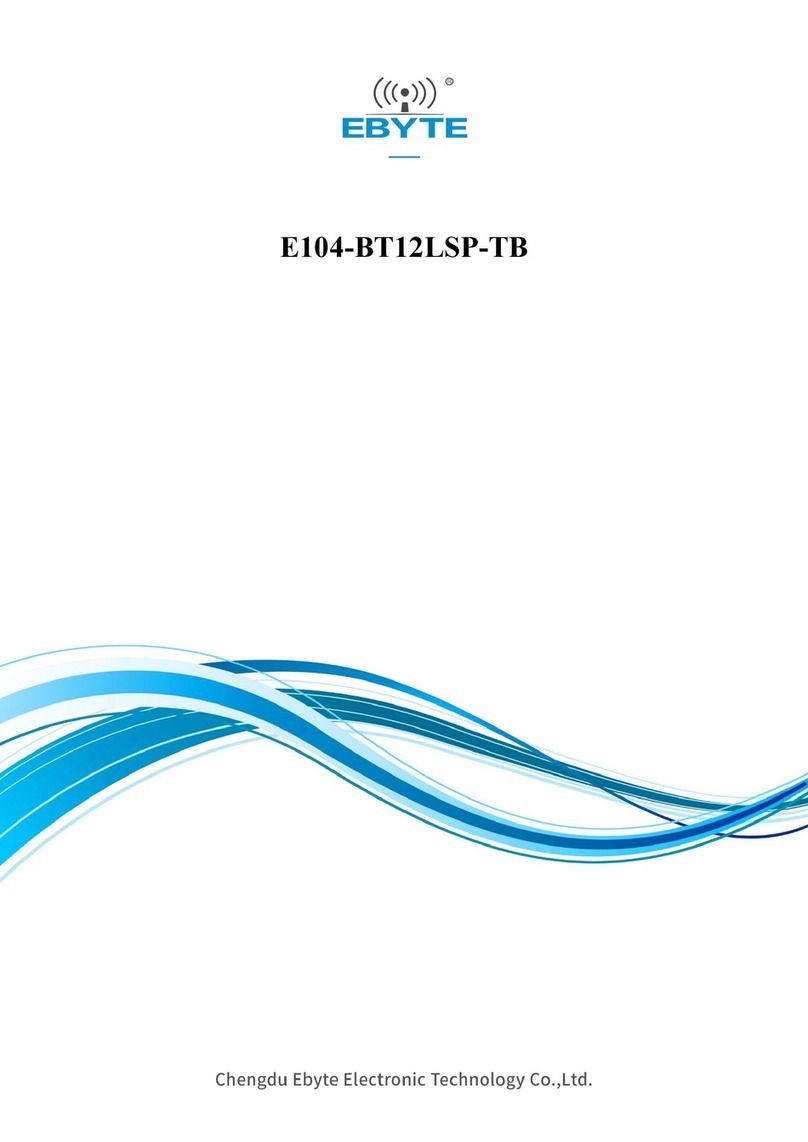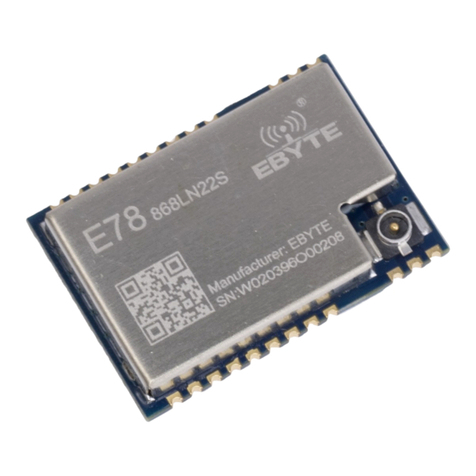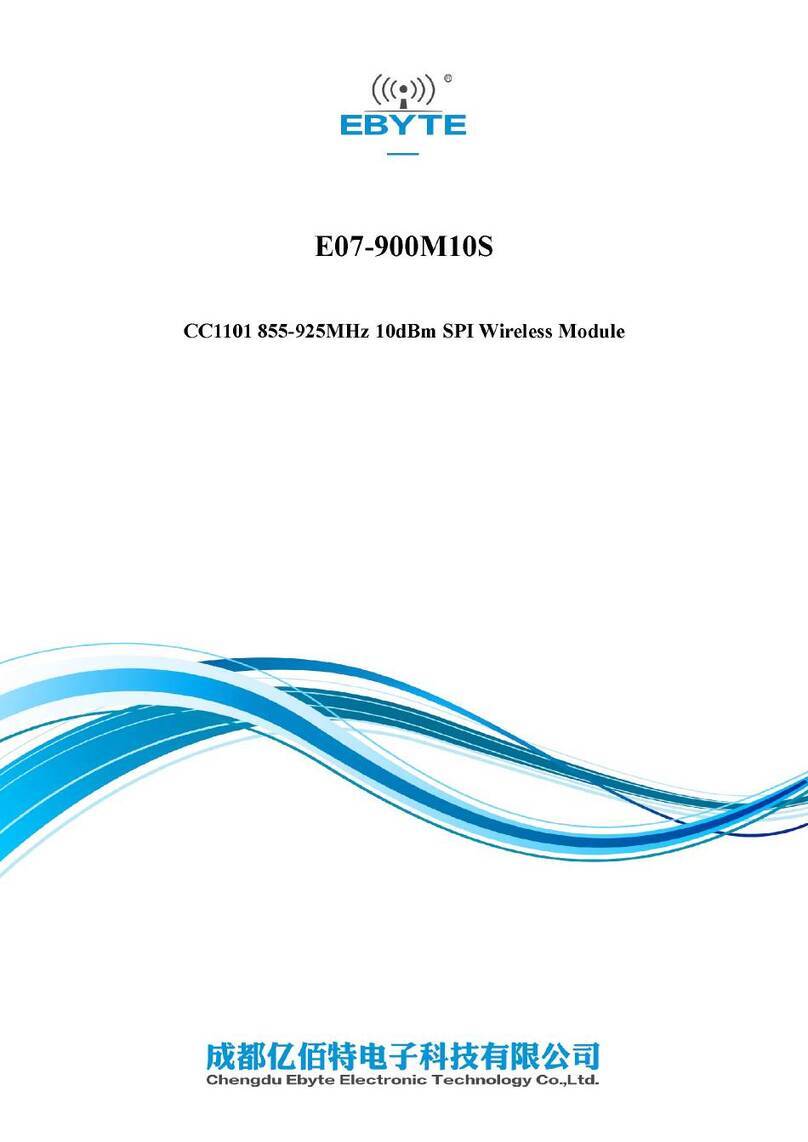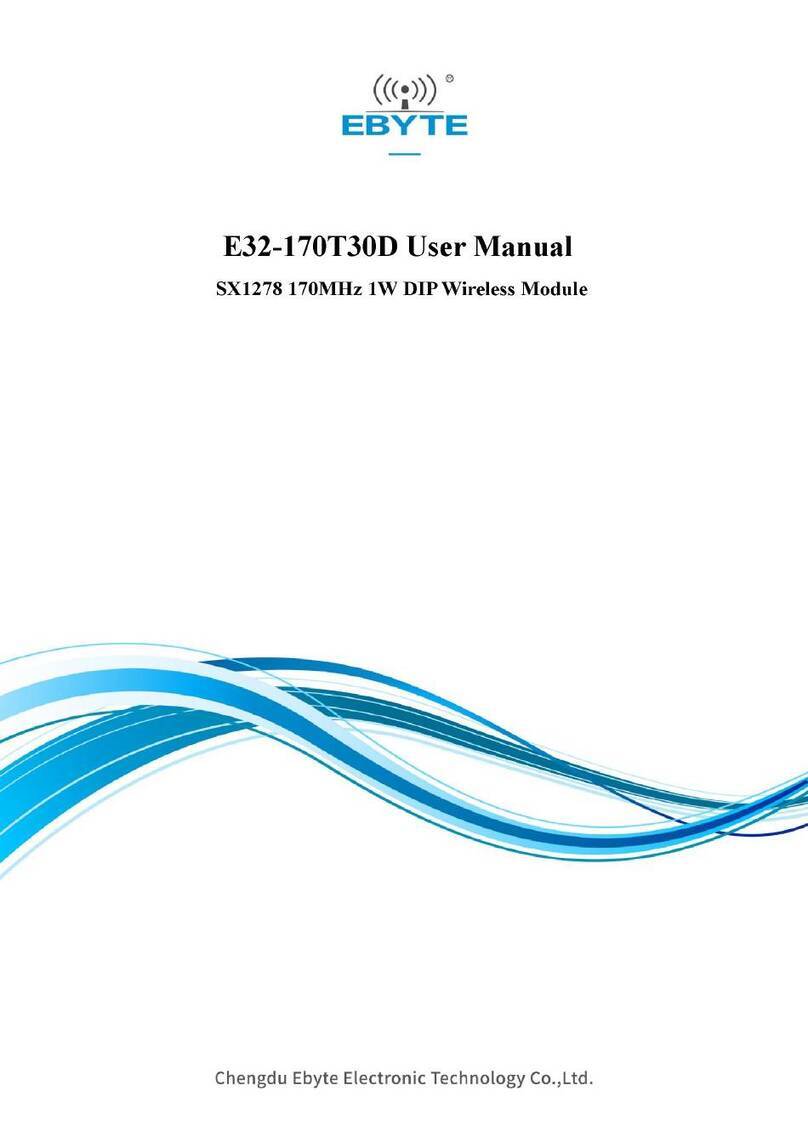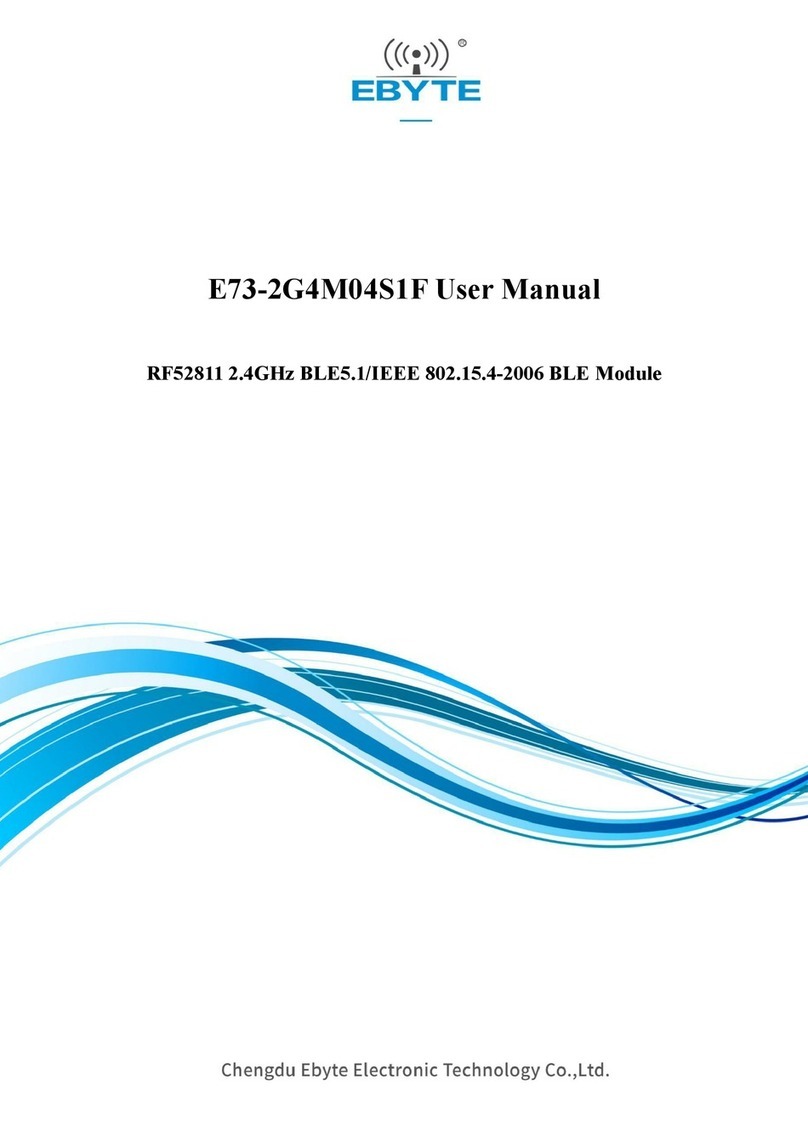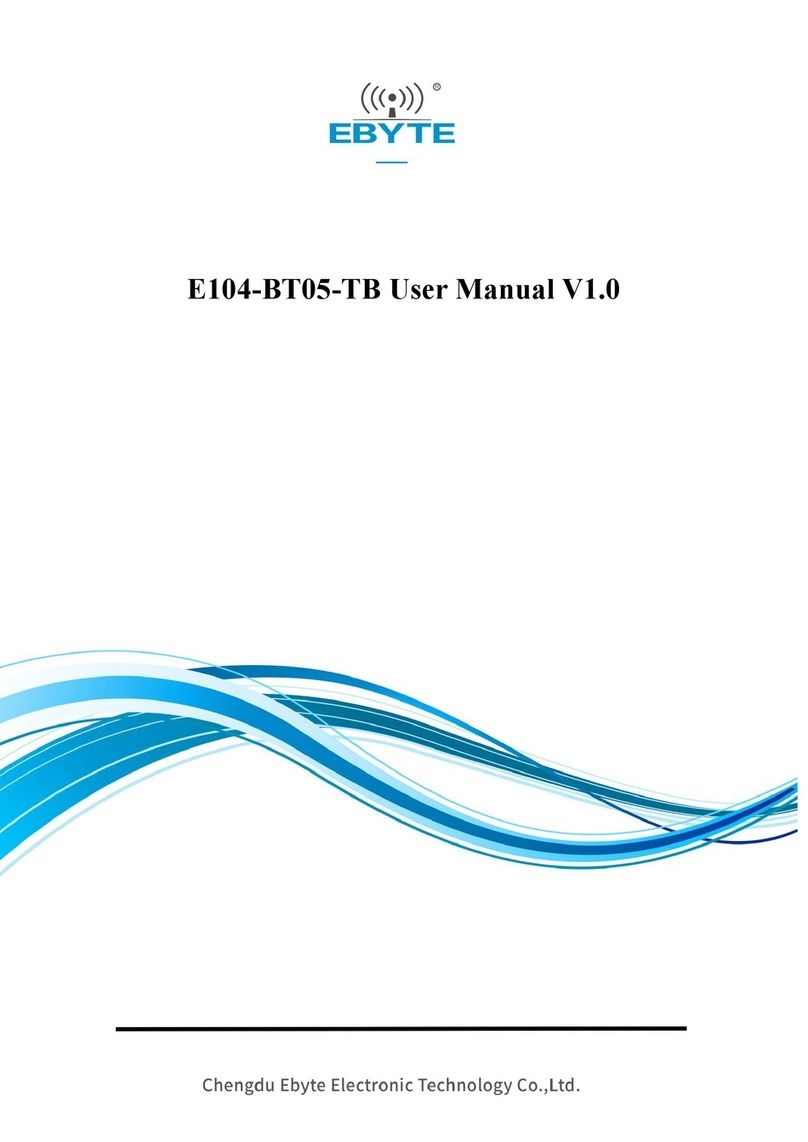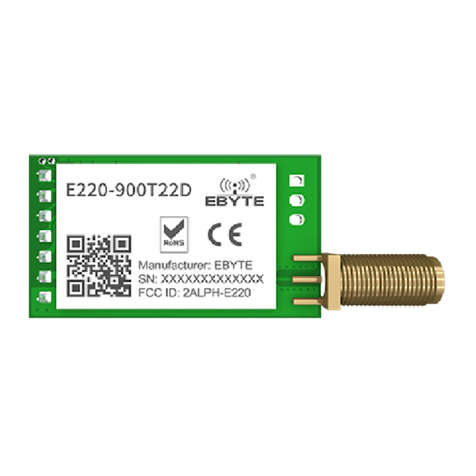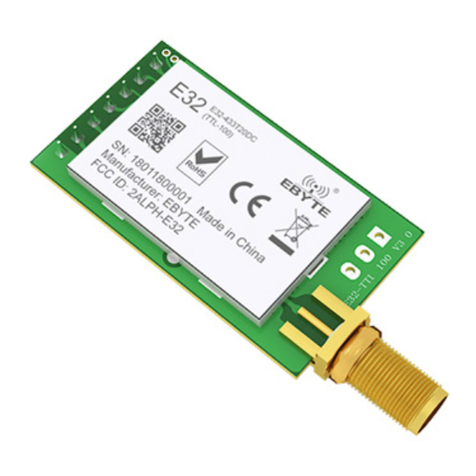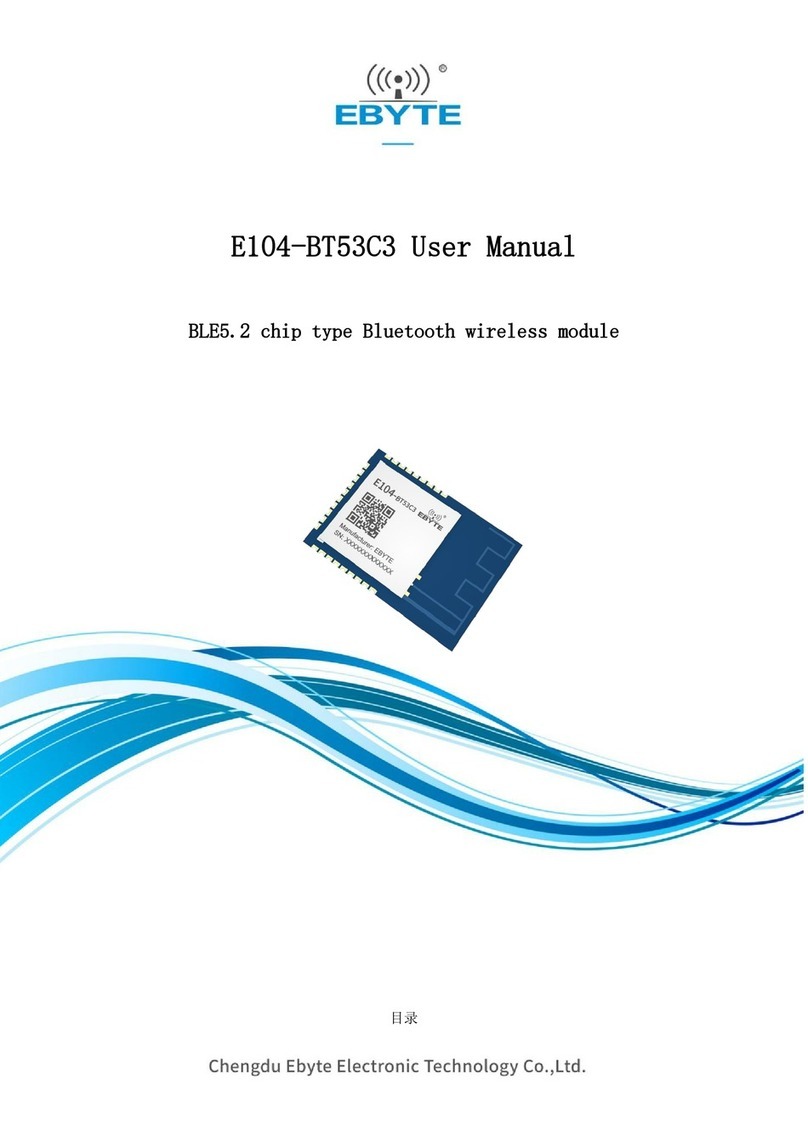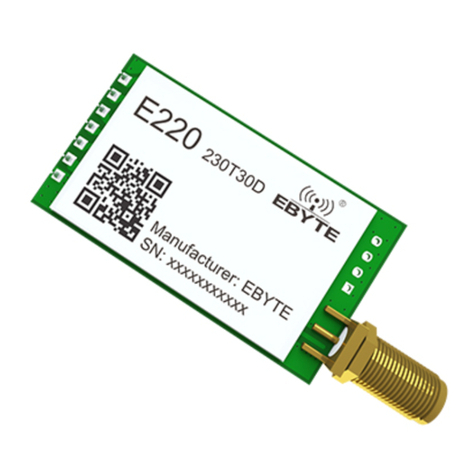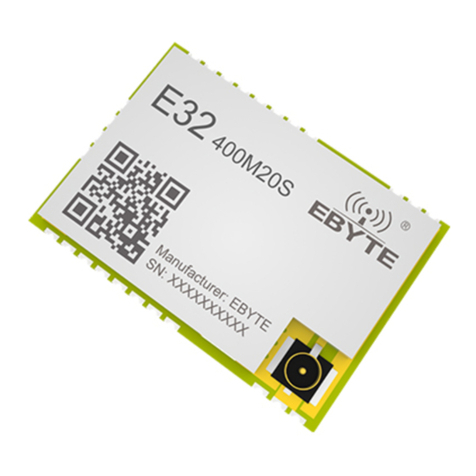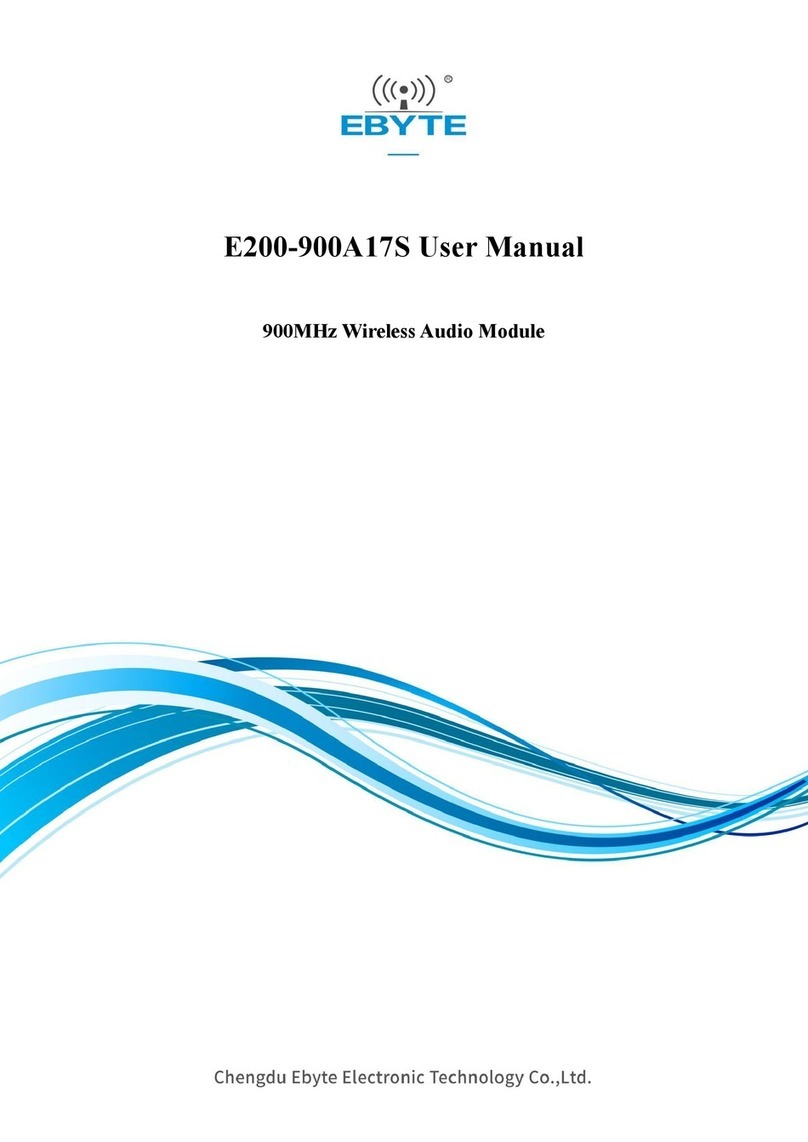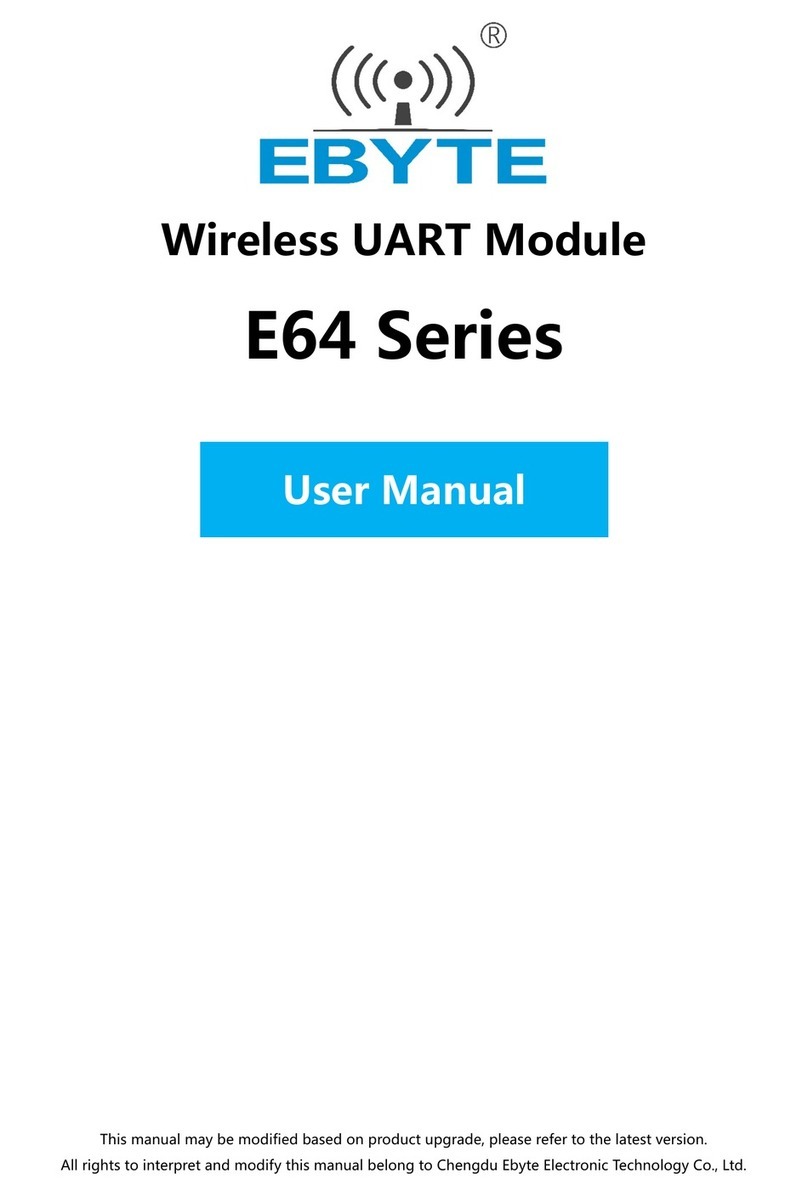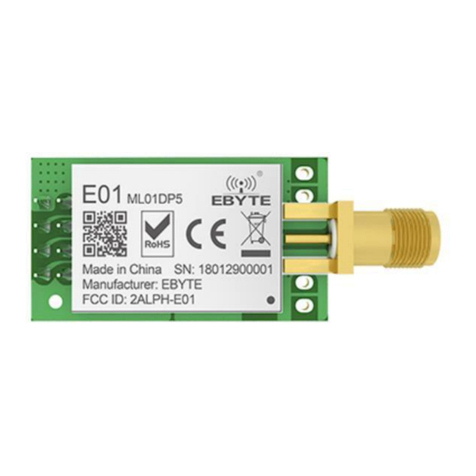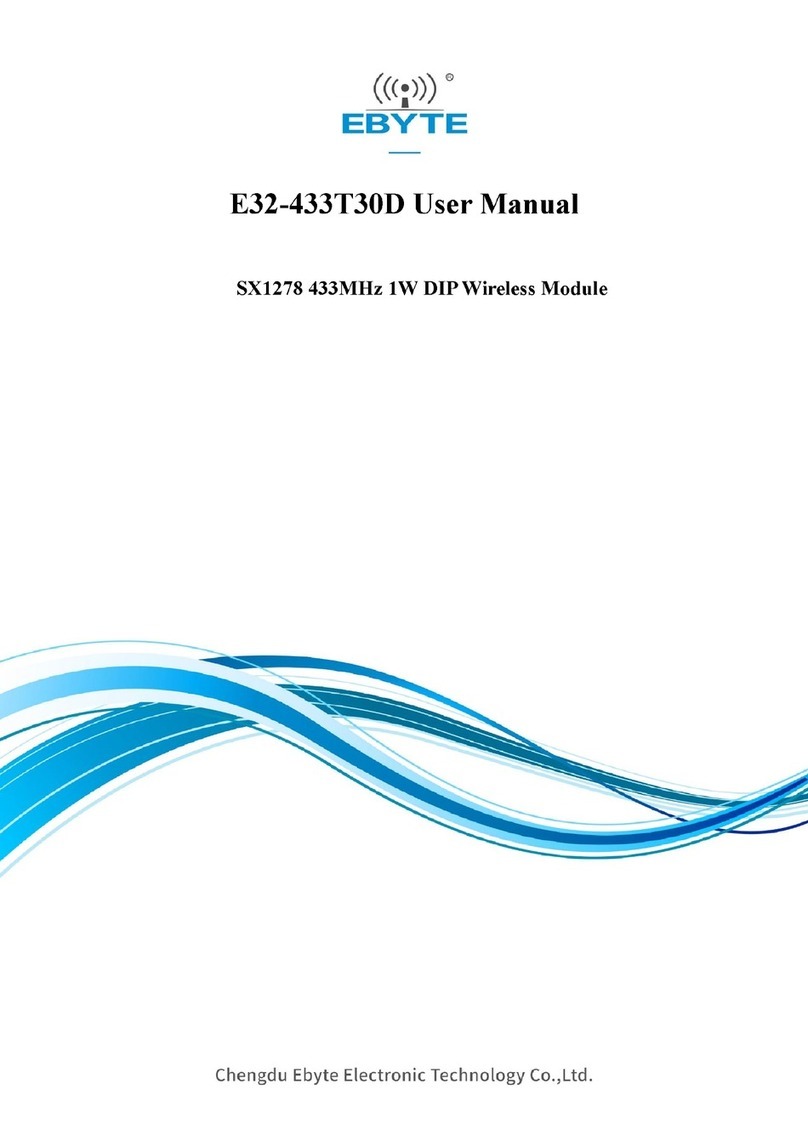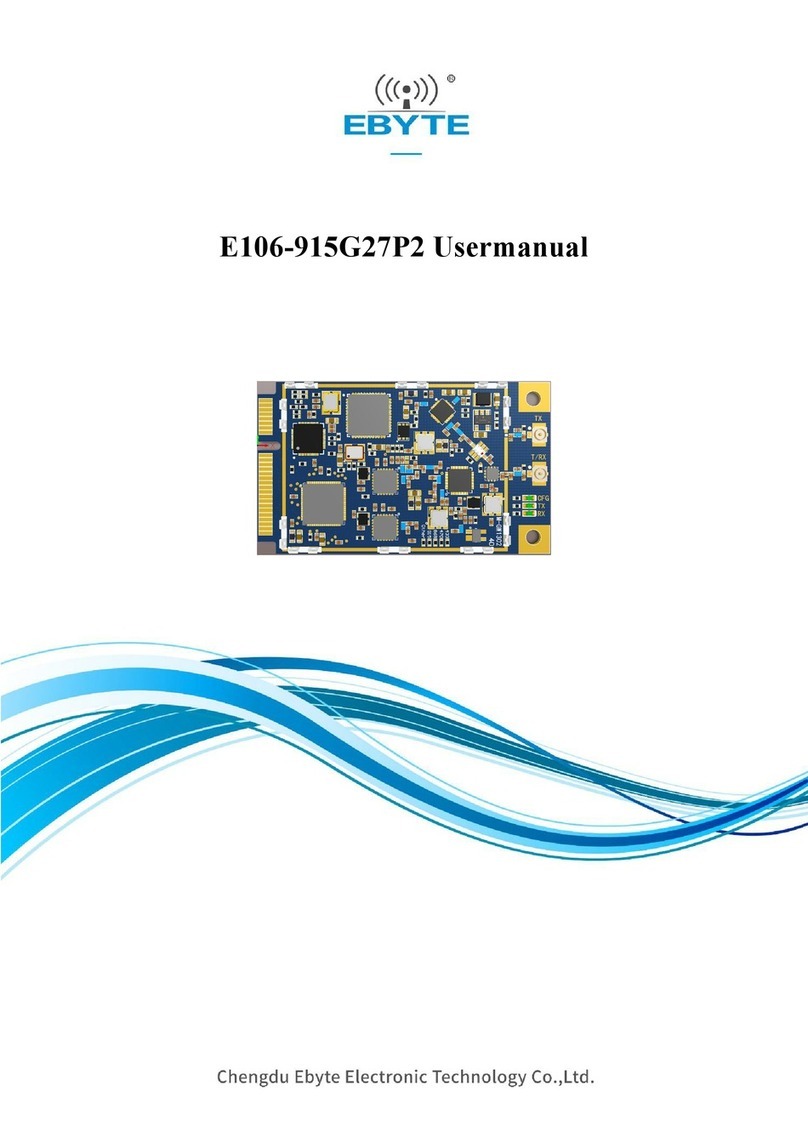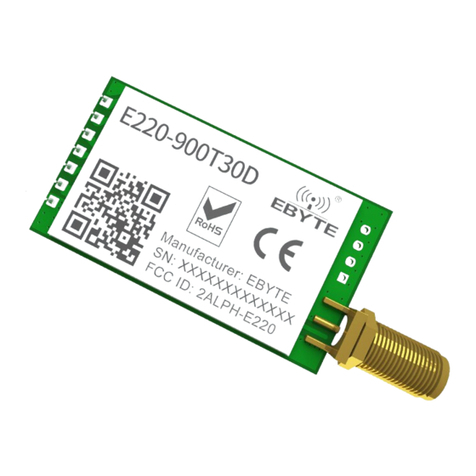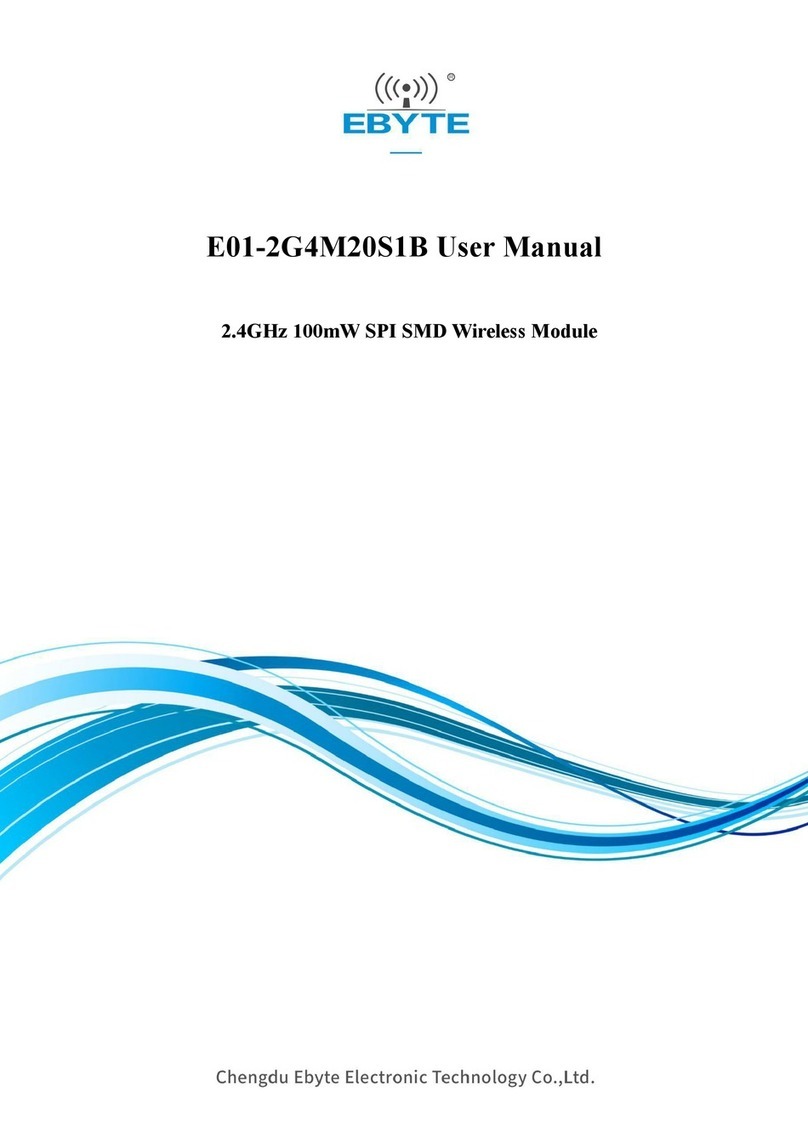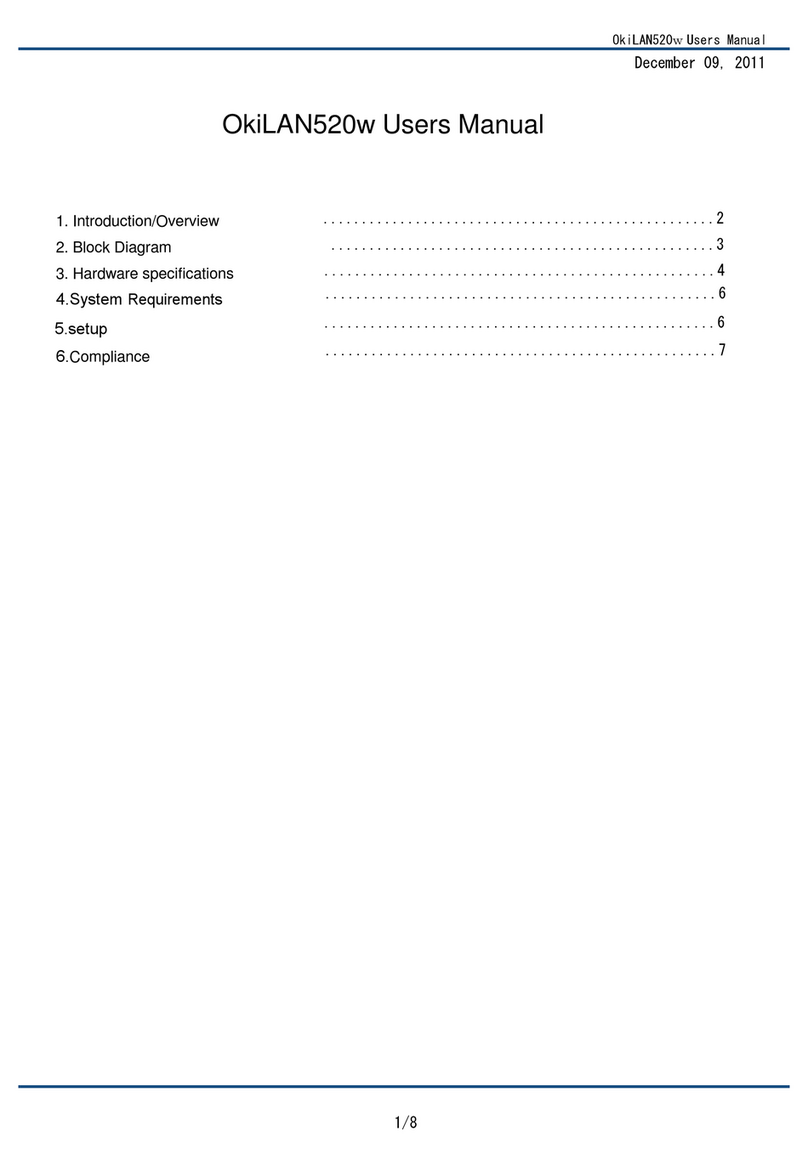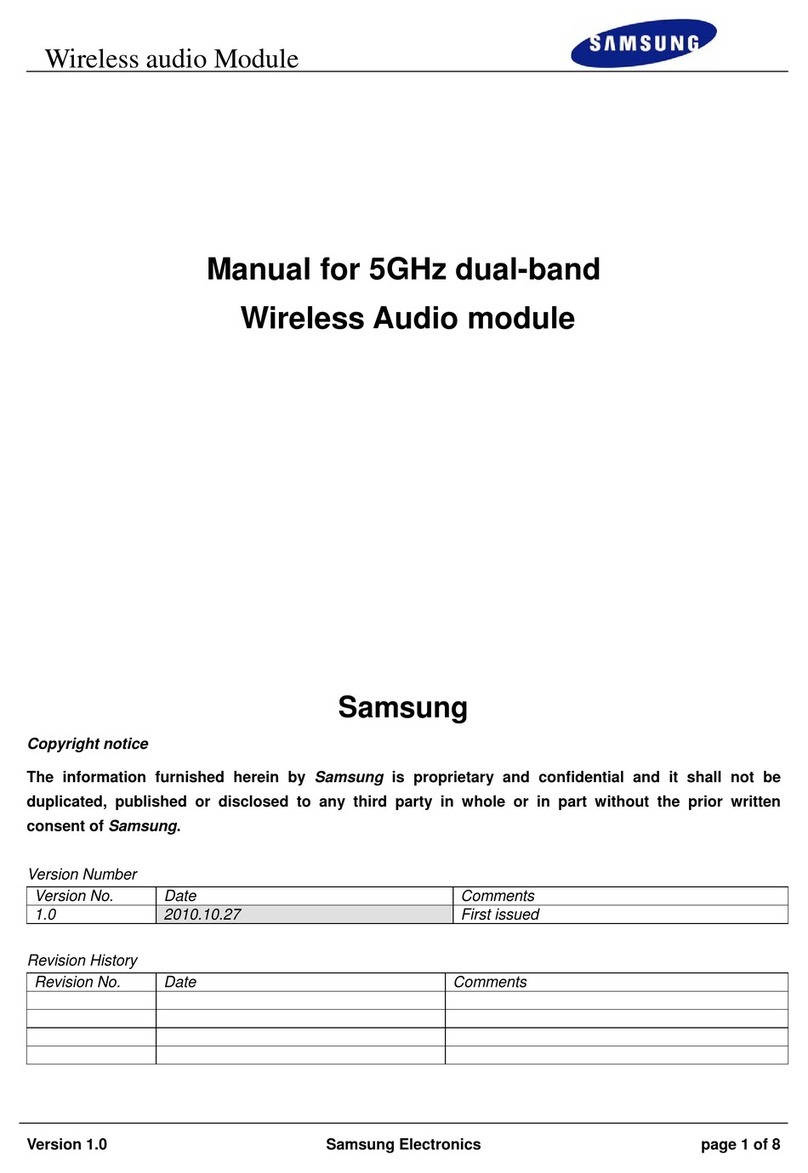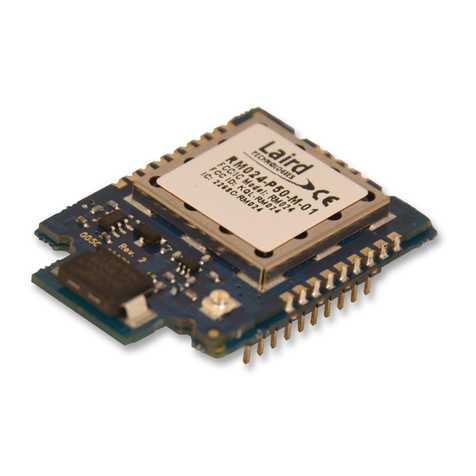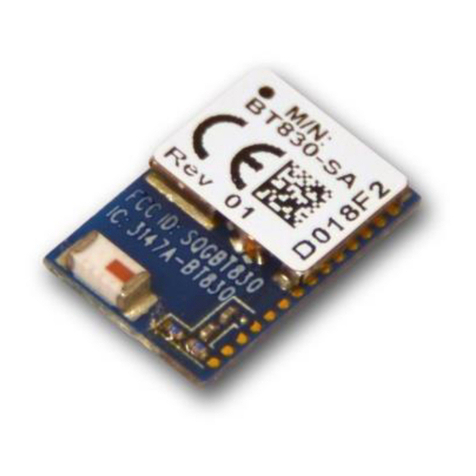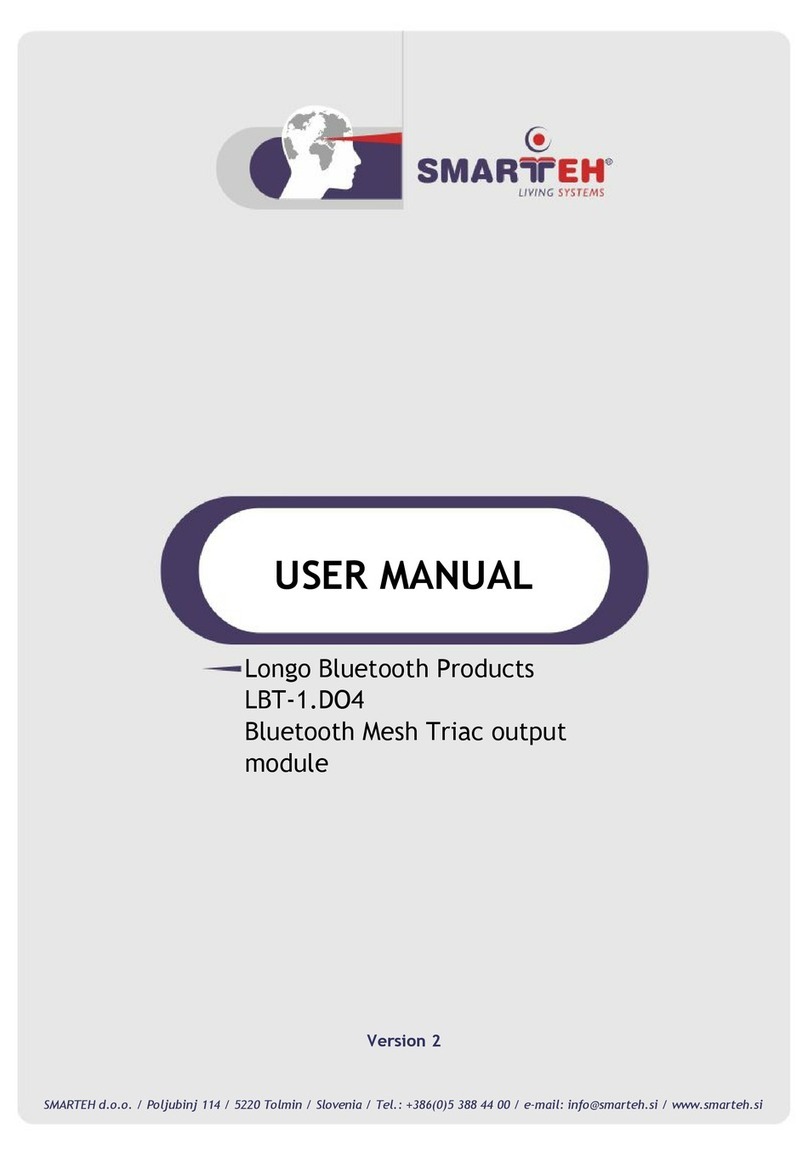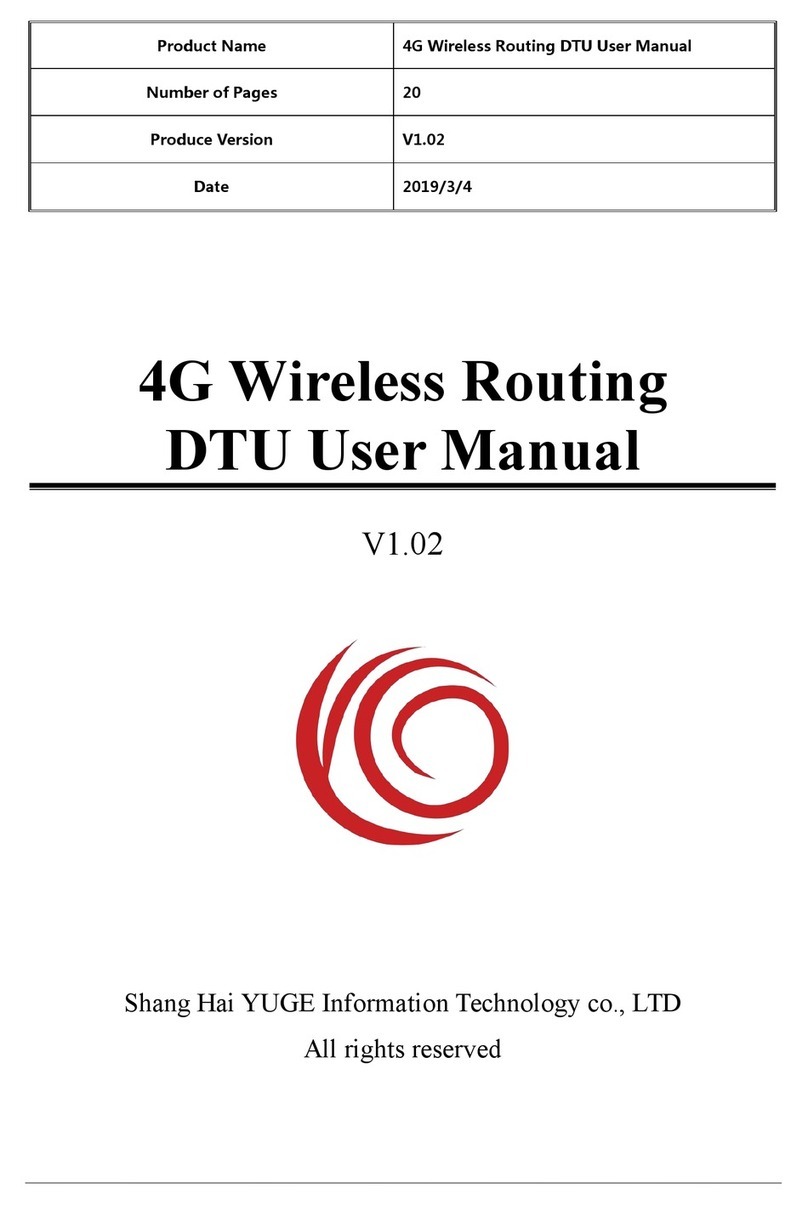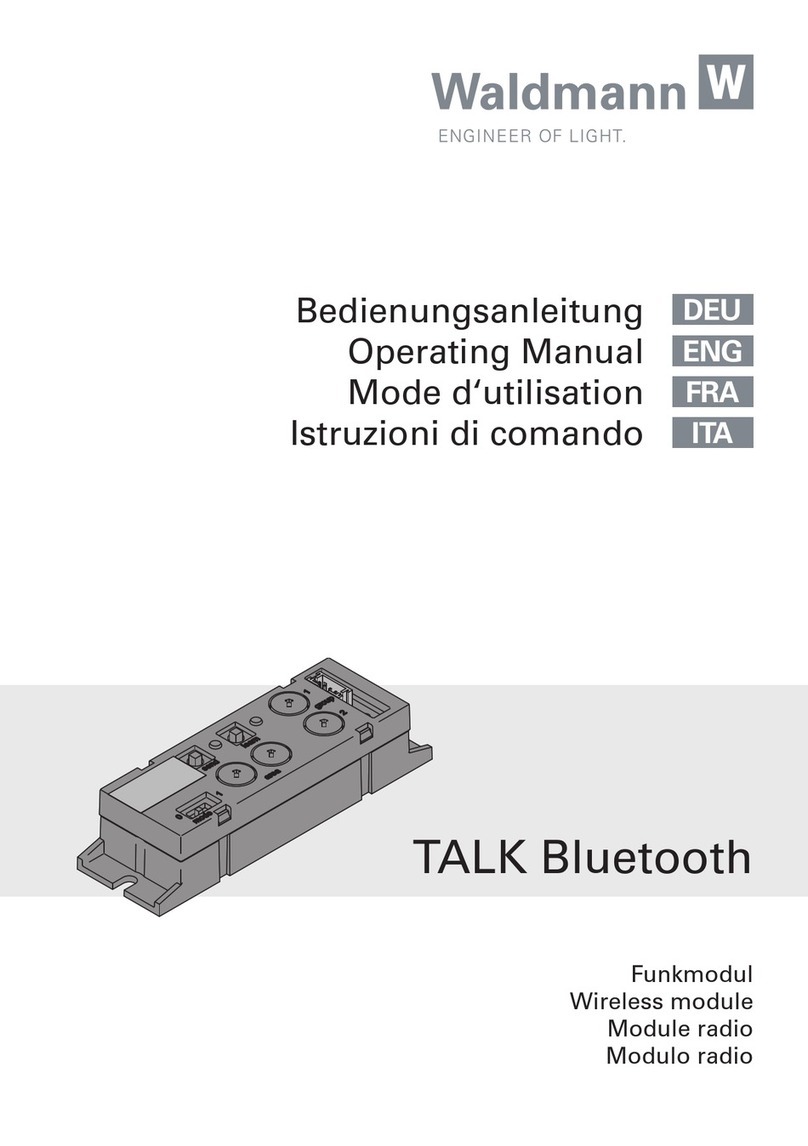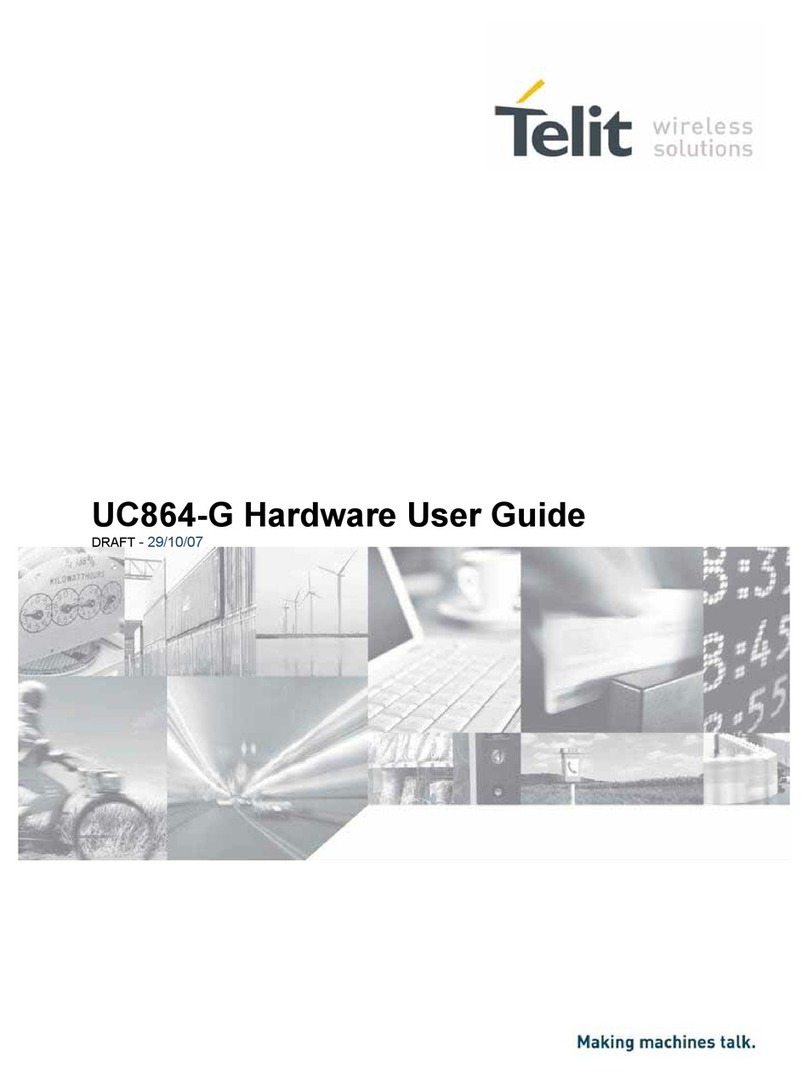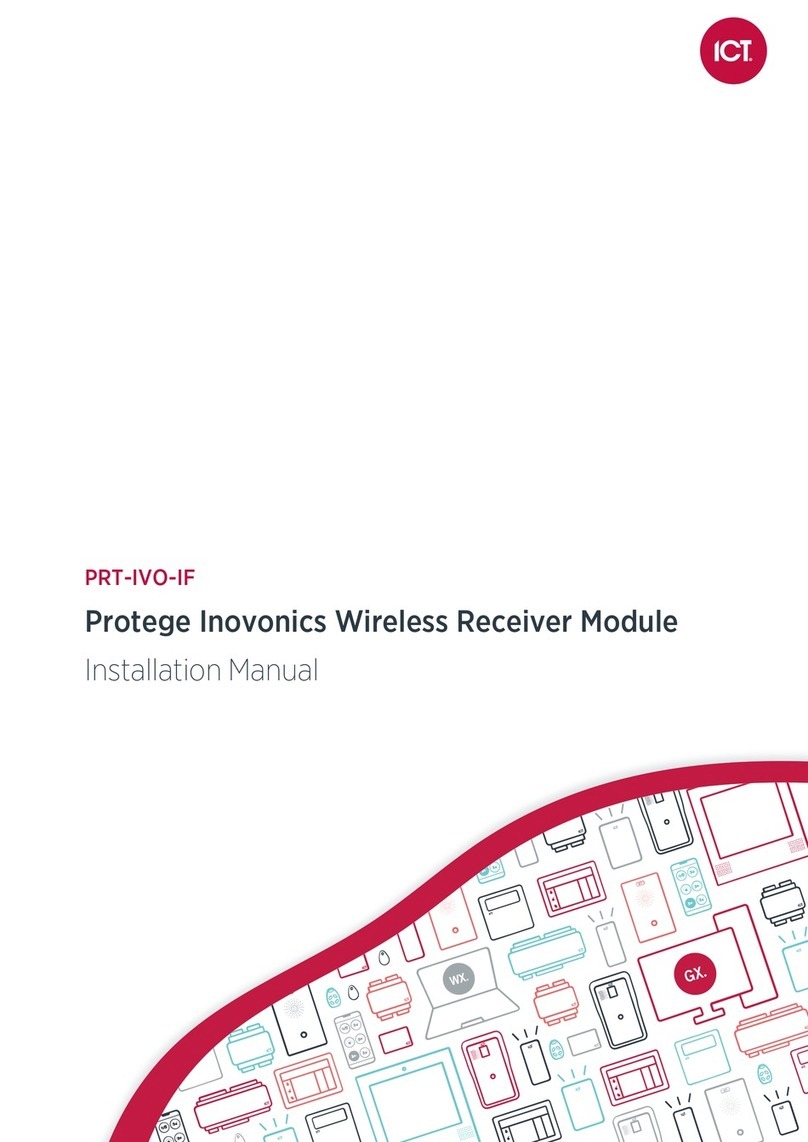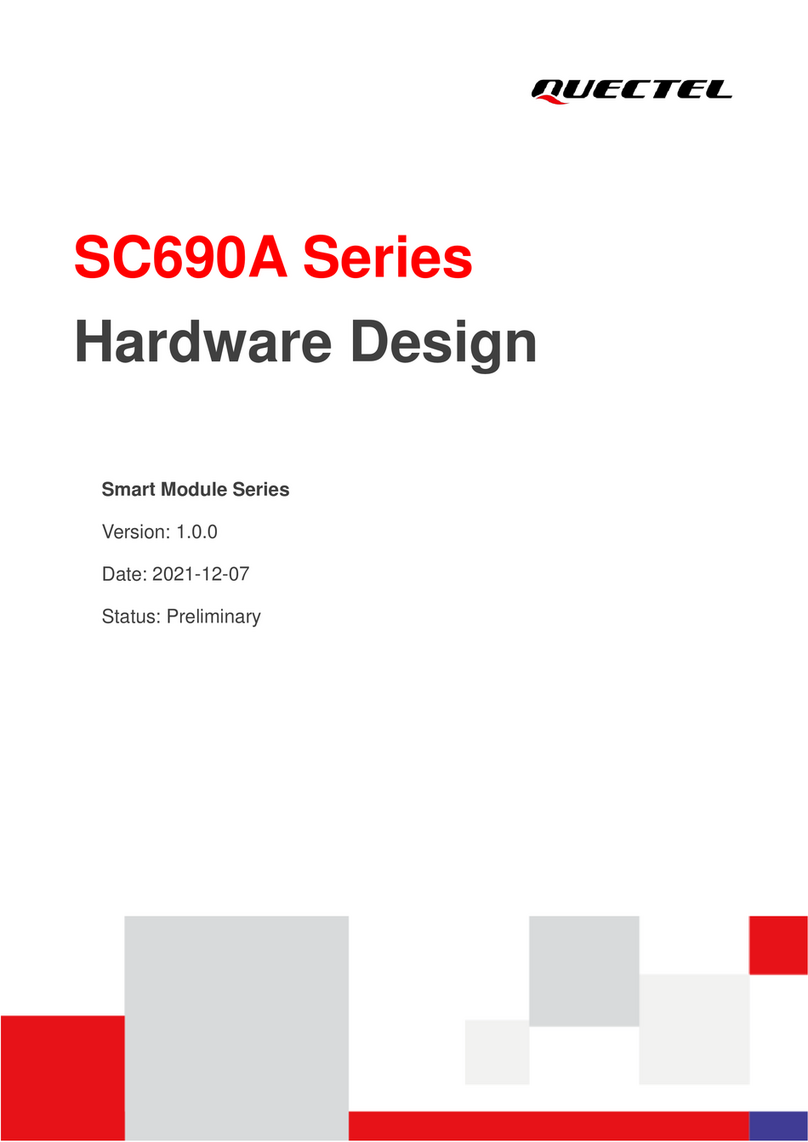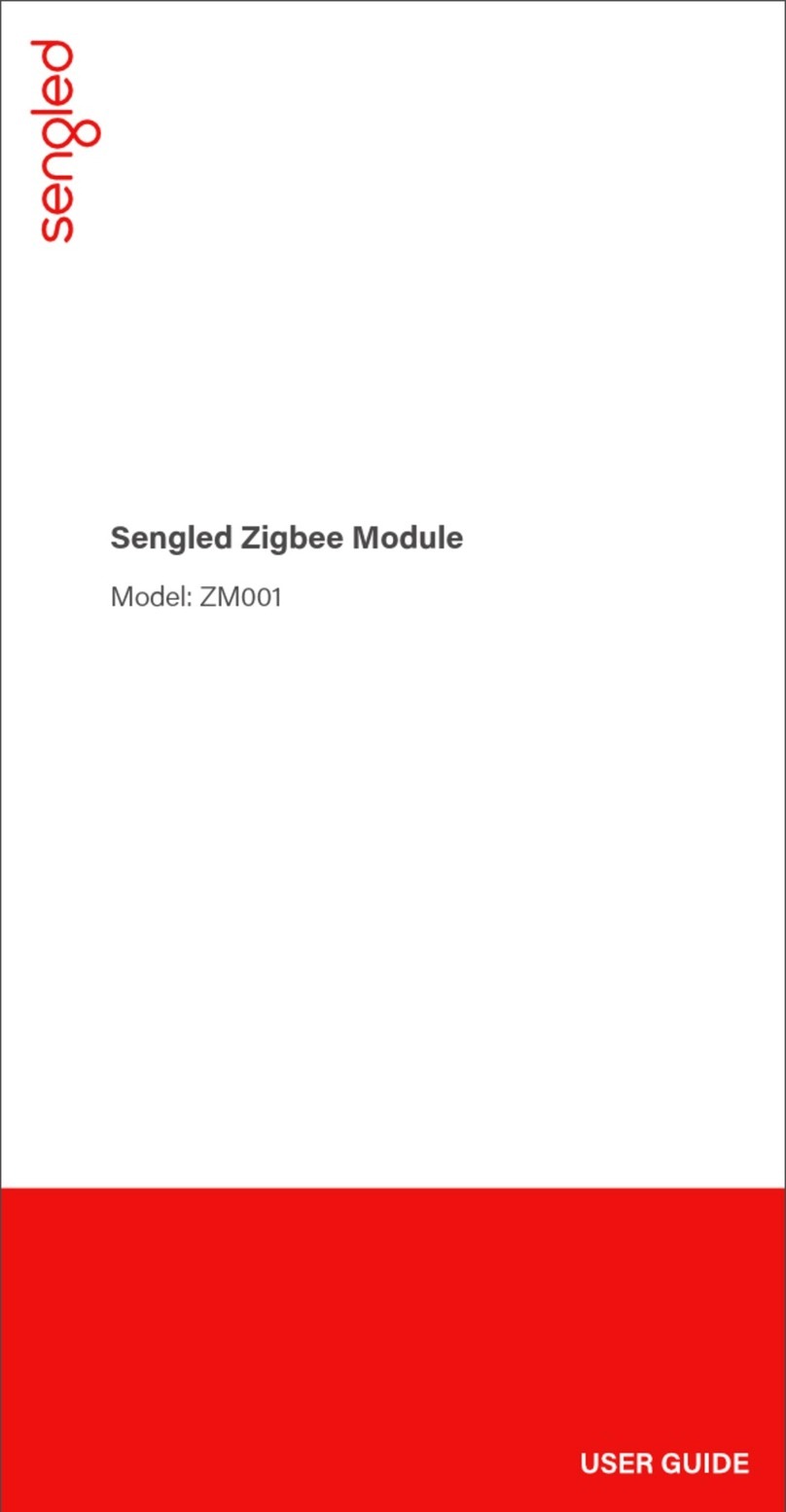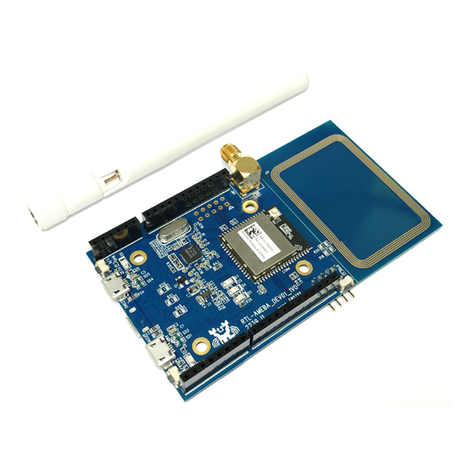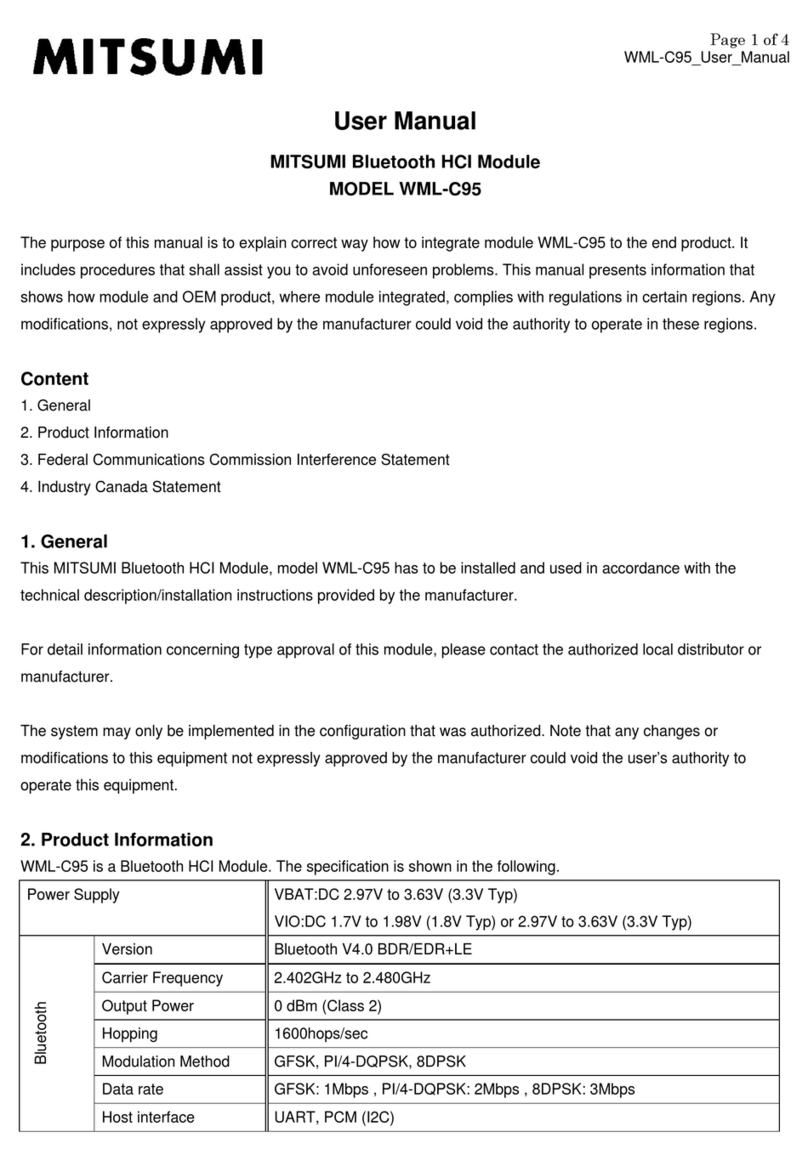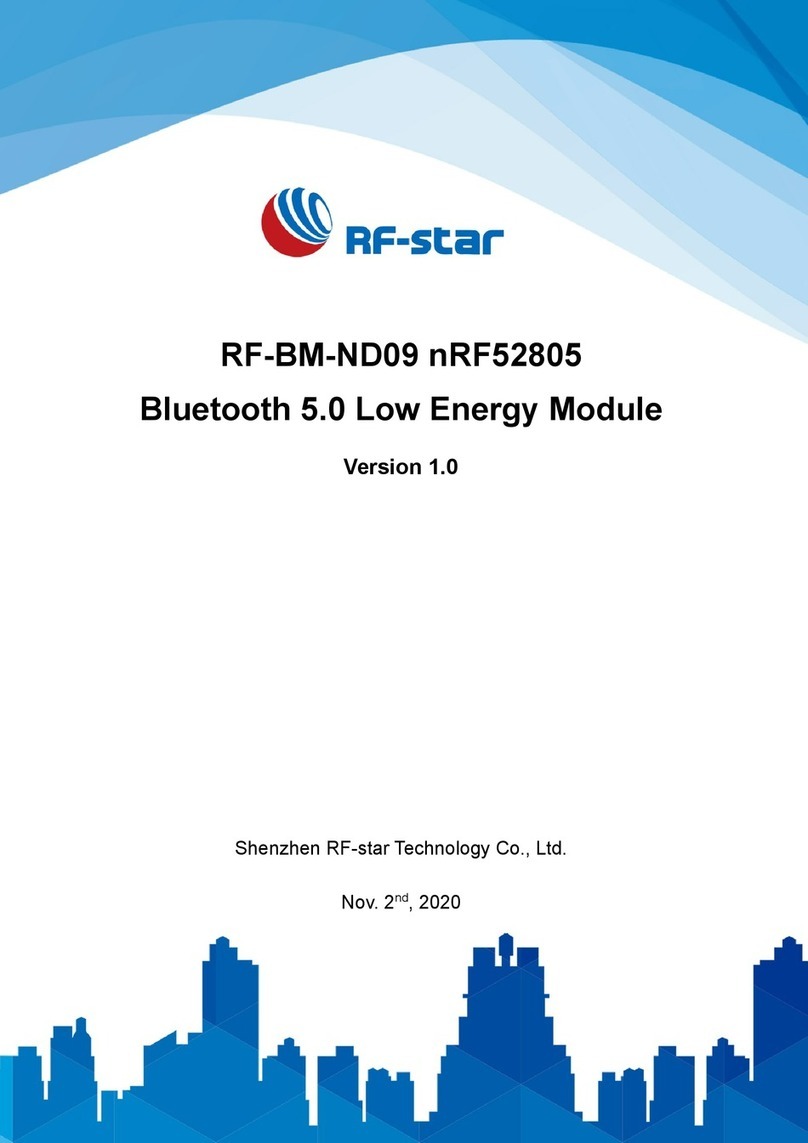Chengdu Ebyte Electronic Technology Co., Ltd. E18-MS1PA1-PCB User Manual
Copyright ©2012–2018,成都亿佰特电子科技有限公司 8
After the publish of ZigBee 3.0 protocol, the latest ZigBee protocol stack is Z-Stack 3.0, it supports CC2530 and
CC2538.
How to apply for standard ZigBee test certification?
Take standard ZigBee Home Automation products as example, developers must develop according to the description
in the ZigBee Home Automation Profile Specification, this document can be found from www.zigbee.or. After developing
the product, developers need to learn the ZigBee Home Automation Profile Test Specification, this document described the
items to be tested by the Test House, it can be downloaded from www.zigbee.org also, in addition, there is another PICS
document, it is specific for describing the functions supported, developers confirm the functions by checking the boxes
according to the actual functions and the required functions in the Specification, as below are the testing procedure:
1) Join the ZigBee alliance, generally assisted by testing labs;
2) Send samples to testing lab, complete the PICS file;
3) First round pre-testing, the testing lab feedback the testing results, developers modify the sample codes.
4) The testing lab verify the modified sample, and starts formal test;
5) The testing lab assists developers to complete the ZigBee alliance online certification application;
6) The testing lab submits the test report to ZigBee alliance. The alliance will review and issue certificate.
Currently, there are two testing labs in China who can complete standard ZigBee test:
1) CESI in Beijing;
2) Element Shenzhen Office (headquartered in England)
Please refer to below wiki link for details:
http://processors.wiki.ti.com/index.php/ZigBee_Product_Certification_Guide
How to select the 64-bit MAC address of the device?
There are two IEEE addresses in CC2530/CC2538/CC2630, one is Primary IEEE address, the other is Secondary
address. Primary IEEE address is stored in Information Page of the chip, this address is bought by TI from IEEE, each chip
has one unique address. Users could only Read this value and cannot modify or erase it. By reading the address in the
protocol stack, users can obtain osal_memcpy (aExtendedAddress, (uint8 *)(P_INFOPAGE+HAL_INFOP_IEEE_OSET),
Z_EXTADDR_LEN). Secondary address is stored in the last Page of the Flash of CC2530, users can Read/Write with the
function HalFlashRead (HAL_FLASH_IEEE_PAGE, HAL_FLASH_IEEE_OSET, aExtendedAddress,
Z_EXTADDR_LEN).
When the protocol stack is operating, how to select Primary IEEE address or Secondary address as MAC address?
Please operate in the function zmain_ext_addr(void).
1) Read IEEE address from NV, if it already exists (not 0xFF), use this address as MAC address;
2) If not in 1), read from the Secondary IEEE address storage place, if it exists (not 0xFF), write the address into NV,
and use this address as MAC address;
3) If not in 2), read from the Primary IEEE address storage place, if it exists (not 0xFF), write the address into NV,
and use this address as MAC address;
4) If not in 3), generate one 64-bit variable randomly, write it into NV, use it as MAC address.
How to forbid node from searching network, or extend the interval for sending Beacon Request?
End Device is low power consumption device powered by battery, after cutting from network, how to forbid the node
from searching network, or how to extend the interval for sending Beacon Request.
1) Start searching network uint8 ZDApp_StartJoiningCycle(void)
Stop searching network uint8 ZDApp_StopJoiningCycle(void)

